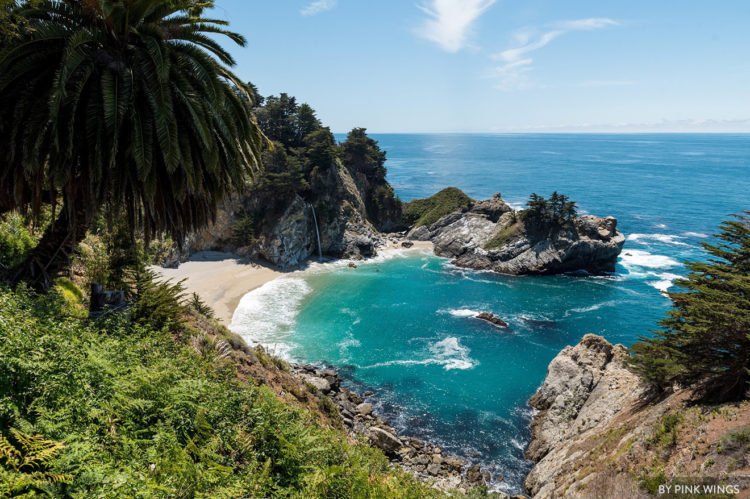Linqia’s recent program with See Monterey connected the brand with Linqia influencers to raise awareness about fun travel destinations in California’s coastal and scenic Monterey County.
All of the program’s top performing influencers featured multiple photographs of Monterey County’s beautiful landscapes, which is unsurprising considering content with relevant images get 94% more views than imageless content. Including original landscape photography can boost the visibility and engagement of your travel content.
We’ve gathered some tips from Linqia influencers to guide you in taking gorgeous outdoor landscape photos and accompanied them with beautiful shots from influencers in the See Monterey program. With this advice in mind, you’re equipped to shoot breathtaking landscapes anywhere, whether on a staycation or thousands of miles from home.
Time it Right
Take pictures in the early morning and early evening to ensure the best natural light for your images. Linqia influencer Adventures of a Carry On recommends that you “think about what you want to shoot and the best time of day to do so. Early morning and sunset provide the best available light for landscape and outdoor photography.”
Linqia influencer Travel Photography Discovery advises that you shoot during “the golden hour” for the best natural lighting because “the time when the sun is close to the horizon presents the best warm light on any subject including plants and flowers. Try shooting during this timeframe when the golden light is happening, as it is the best time to be outdoors.”
Additionally, snapping images in the early morning helps to avoid unwanted tourists or other people in your images. Comeback Momma says that “most subjects are best captured in the morning, while other people are still asleep. You need to get up early to get that amazing photo opportunity.”
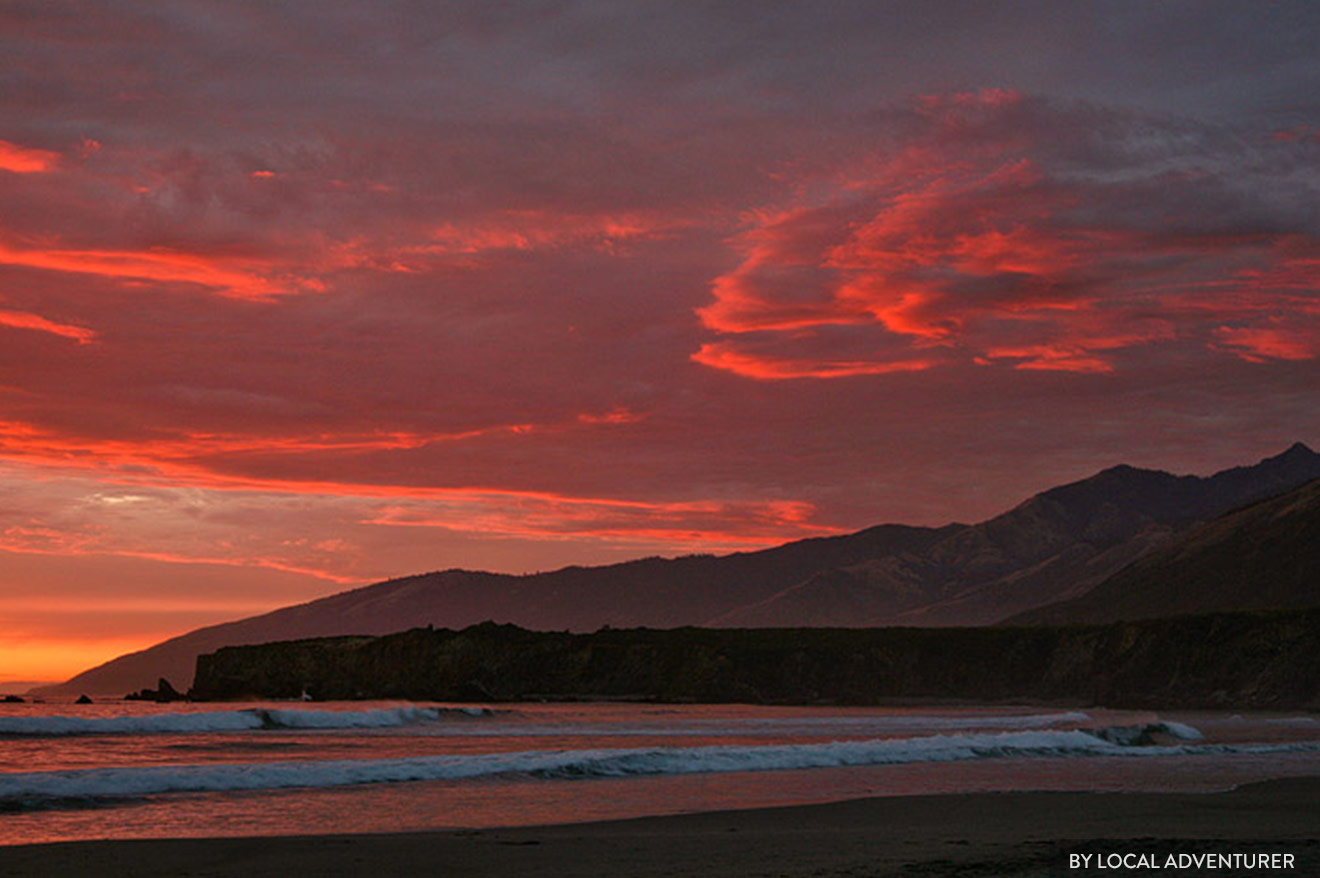
Local Adventurer shot this beach vista in the golden hour, just as the sun is above the horizon, catching the light as it paints the clouds and ocean breathtaking colors.
Consider Composition
Use the rule of thirds for well composed photographs. The rule of thirds visually divides an image into 3 separate sections. Most smartphones and digital cameras have a mode that shows 3 grid lines (horizontally and vertically) on your screen display, which you can use to help divide your composition into even thirds.
Place the focal point of your photograph (the feature or spot in the image that the eye is naturally drawn to) near one of the intersections of the camera’s display grid lines. Aligning the focal point with one of these intersections will naturally move the eye to the focal point, resulting in a visually please image.
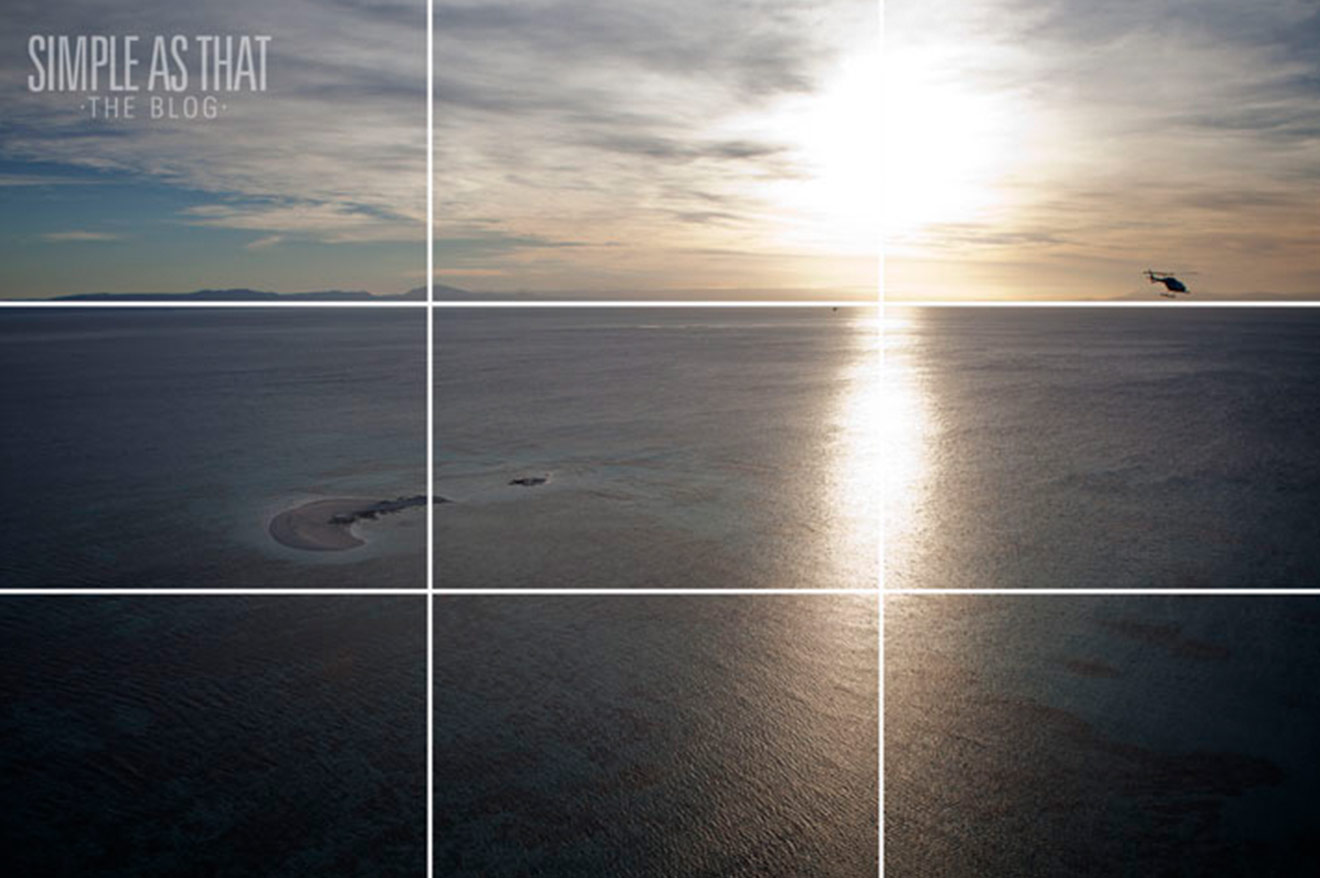
Simple as That uses the grid lines to check if her horizon is straight as this is often more aesthetically beautiful than a crooked horizon. Additionally, she recommends checking all four corners of your grid to see if there are “any distracting elements that take away from the scene ie. a light post, brightly colored sign, etc.”
Keep something in the foreground of your landscape to give your photo added depth and scale. A Globe Well Travelled says that “it might be tempting to capture a landscape by focusing on only what’s in the distance, but having something in the foreground (ie. closer to you) might make the shot more interesting.”
Pay Attention to Camera Gear & Settings
For DSLR (digital single-lense reflex) cameras, use landscape mode and a wide angle lense for optimal shooting. With scenic photography, Simple as That says “you want more in focus since you are photographing expansive areas, as opposed to portrait photography where you want only your subject to take center stage.” She also recommends keeping the aperture of your camera small when photographic landscapes, because more will be in focus.
If you’re thinking of purchasing a DSLR camera, Bearfoot Theory recommends renting before taking the plunge. She says “you can read all of the reviews you want, but there is nothing better than getting a feel for a camera in your own two hands.”
For those shooting with a smartphone camera, use the panoramic setting to capture wide vistas. Jeff Sullivan Photography says to “keep in mind that it doesn’t necessarily have to be long, skinny, panoramic view – you can simply capture a larger, wider square or rectangular view. If you do continue panning to capture a wide panoramic view, you will have plenty of detail and can level and crop the image later.”
Also, set your smartphone to HDR or “high definition resolution” mode. This will capture the most amount of detail in your image and give richness to your landscapes.
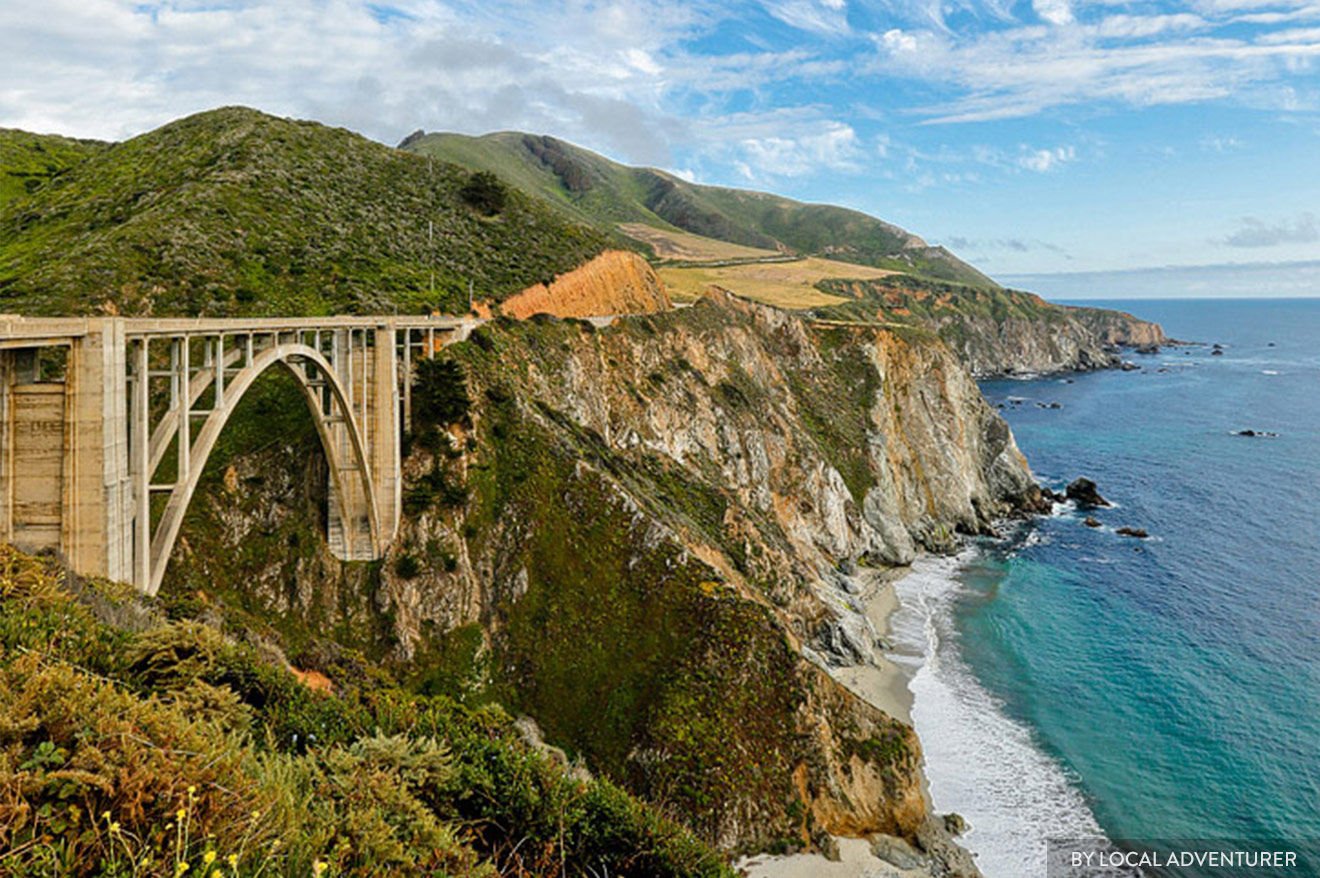
In the photo above, Local Adventurer captured the Bixby Bridge in Big Sur in Monterey County. A wide angle lens allows her to capture rich details of the entire scene, from the grasses in the foreground to the cliffs and rocks in the background.
Discover New Angles
Find new or unusual angles to approach the landscape, especially if it contains a well known and often photographed landmark. My Life is a Movie suggests going “as far away as possible from that token travel photo-op spot to experiment with unique angles.”
“We all look at things differently so find your own path,” agrees A Balancing Peach. If you take a moment to explore around the landmark, you’ll likely find a great new vista that hasn’t been seen before.
In the photo below, The Ohio Transplant took a unique approach to photographing the Monterey Coast when she chose to include the beautiful greenery that lays adjacent to the scenic, white sand beaches.
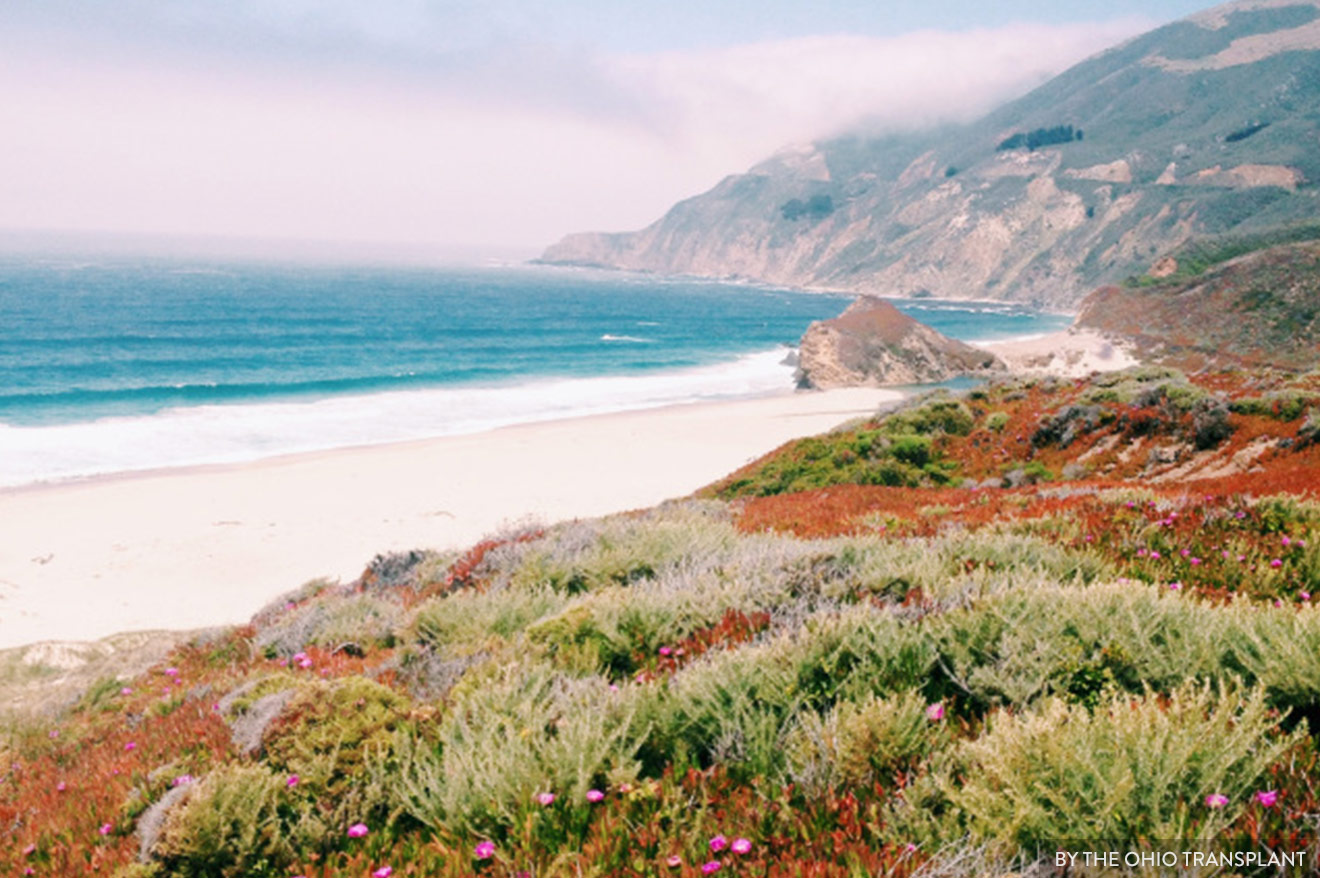
Follow these tips for taking beautiful landscape photos that capture a travel memory and attract people to your content. You can read more photography advice from Linqia influencers on our How To Take Mouthwatering Food Pics and Capturing Childhood: How to Take Beautiful Photos of Your Little Ones blog posts. Share your tips for getting great outdoor snaps on our Twitter and Facebook!
